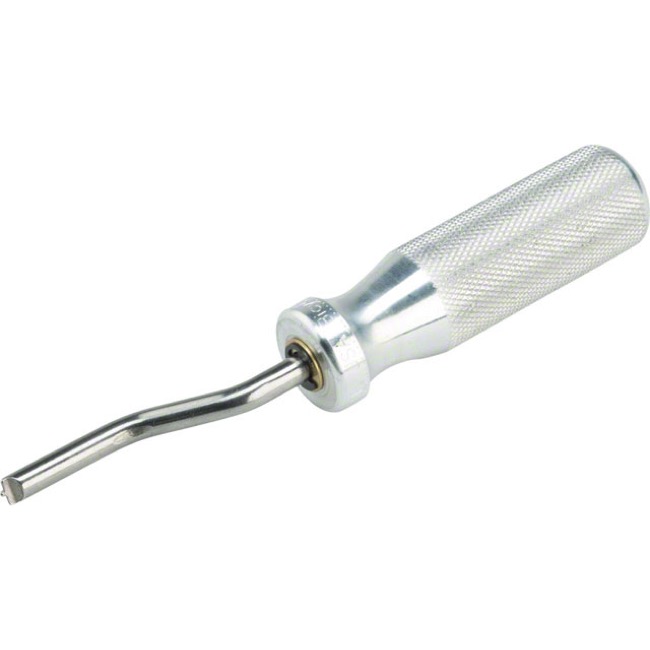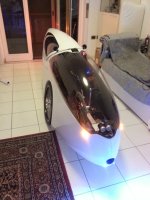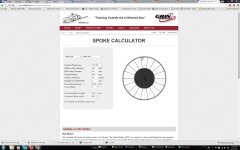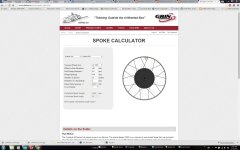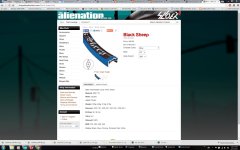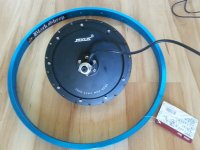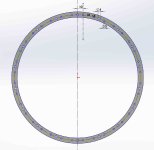Re: lacing patterns:--
If you're lacing a hub motor or a large diameter gearhub like a NuVinci, don't even consider cross-2, 3, or 4 lacing. You don't need it, and you'll wind up breaking spokes needlessly. Your task is only to decide whether you can get away with cross-1 lacing-- that is, whether the spokes and nipples can sit in line with each other when tightened-- or whether you can't and thus must use radial lacing or some exotic partial cross pattern instead. A good rule of thumb is that 700c and most 26" rim and hub motor combinations can use cross-1, and that 20" and 24" wheels usually must use radial lacing, or else the rim holes must be modified to allow the nipple to tilt more than normal.
Re: inbound vs. outbound spokes--
Since hub motor wheels are always using either cross-1 or radial lacing, the spokes never cross each other near the flange. They don't have to be alternated inbound and outbound, or as I put it, "elbows in" and "elbows out". Thus you can gain a small but worthwhile bit more bracing angle by lacing all the spokes elbows-out, or equalize spoke tension a little bit by lacing the rear wheel's right side all elbows-out, and the left side all elbows-in.
Re: wheelbuilding toools--
Spokes should be tightened to at least 100kgf on the tighter side of the wheel. For that you must use a spoke key (or socket tool if using hex-headed nipples); a screwdriver will not work. However, a screwdriver-like tool called a "nipple driver" can be a great help for getting a wheel laced up and ready to add tension.
A tensiometer is an invaluable tool to tell you when you're done adding tension. It's very hard to tell how tight a spoke is by squeezing or plucking it, especially with the weirdly short spokes most of use use on hub motors. In fact, some of our short spokes and lacing patterns make it impossible to get a measurement with a tensiometer. The DT Swiss tensiometer doesn't need as much uninterrupted spoke as the Park or Wheelsmith gauges. Radial spokes are easier to measure than crossed spokes.
Re: good rims for e-bikes--
There is little incentive to shave grams on an e-bike, especially when there is a potential cost in reliability. We want rims that are strong, heavy (by bicycle standards), and preferably cheap.
There's no better rim for the money than the Alex DM24. You can get it in 20", 24", and 26", but not 700c as far as I know. It costs about $25 plus shipping at an online discounter, or about $35 at a brick-and-mortar bike shop. It weighs over 600 grams, has a good braking surface that you can use or not, and is made with good materials and consistency.
The Sun Rhyno Lite is the closest equivalent for 700c wheels. $35-40 retail, time-honored, burly. It's just a little lighter and narrower than DM24.
For those who have enough tire and brake clearance to use a moderate fatbike rim, the Origin8 DAT-PRO-65 is a crazy strong rim for the money, about $60 retail. It's 65mm wide, which is the catch, but it's double walled, with braking surfaces, and weighs about 1100g in the 26" size. Importantly for us, it is available in 36 hole drilling, which many fatbike rims are not.
For narrower tires that don't fit well on the 28mm width of the Rhyno Lite or 32mm width of the DM24, the Alex Adventurer and Alex DM18 are inexpensive rims with all the same virtues but narrower width. The Velocity Chukker is expensive ($80ish) but an outstandingly strong rim with a highly optimized cross-sectional shape. All the above three are available in 26" or 29".
Re: spoke quality--
DT Swiss, Sapim, and Wheelsmith spokes can be considered top quality, and interchangeable in that regard. From among these, you don't need to choose by brand-- only by length, gauge, price, and availability. DT Swiss and Wheelsmith both had issues in the past, but that is so long ago now as to be of no significance.
Union and Marwi spokes are OK. Many generic spokes e.g. "Wheelmaster" are usually Union brand, with a house brand label to offer versatility to the distributor. Nisi are more than likely OK if they're still around. There are others that were second to none in their day, but only the big three of DT Swiss, Sapim, Wheelsmith should be considered beyond reproach these days. Spoke metallurgy has improved a lot in the past two or three decades, and any spokes from before then, or companies that have fallen into obscurity since then, should be regarded as less than ideal.



